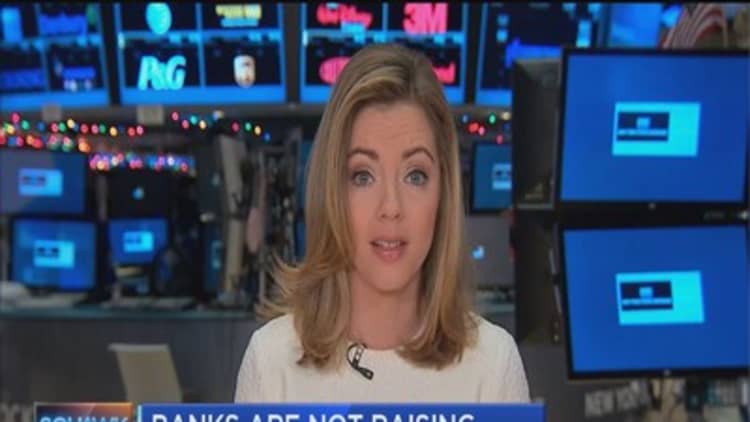
Stashing cash in a savings account has yielded nearly nothing, aside from peace of mind, and that's not going to change much now.
On the heels of the Federal Reserve's widely expected quarter-point increase in its target funds rate Wednesday, Wells Fargo announced it would increase its prime rate — the rate at which individual banks lend to their most creditworthy customers — to 3.5 percent effective Thursday.
Other banks followed suit, including U.S. Bancorp, JPMorgan Chase, M&T and PNC. As of yet, the deposit rate, which is the interest rate banks pay to its account holders, will remain unchanged.
"This is typical of the big banks: Use market conditions to benefit themselves at the expense of their customers," said Ric Edelman, an independent financial planner. "Heads they win, tails you lose."
The average interest rate on a savings account is only about 0.48 percent right now, according to Bankrate, and even after a Fed rate hike, banks have no incentive to pass on any of the increase to their customers, which means interest on deposits will remain near rock bottom.
"Loan rates will rise but that's not necessarily the case for deposits as banks are already flush and don't need to raise rates to bring more in the door," said Bankrate.com Chief Financial Analyst Greg McBride.
"We've had years of improving economic data with low inflation, it shouldn't be a surprise that the Fed would come off their zero interest rate policy at this point," said Barry Glassman, founder and president of Glassman Wealth Services. But, he added, "that doesn't solve the yield drought that's been going on for seven years."
The Fed has no direct influence on the prime rate or the deposit rate, although both tend to be correlated to changes in the target federal funds rate.




